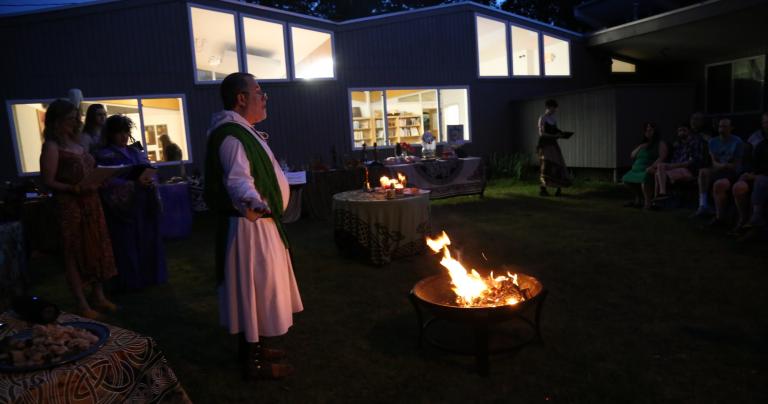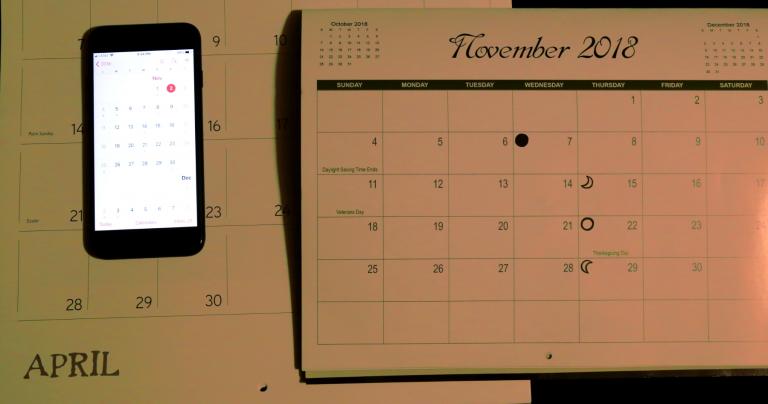I was scrolling through Facebook last Wednesday morning when I came across this question in a big font on an attention-grabbing background:
How do you get people engaged and make a group grow?
My half-awake short answer was “you give them something to be engaged with, something they’re passionate about.”
But this is a deep question that requires a lot more than a quick answer. It’s also an important question. I keep talking about the need for Pagan groups and institutions – you can’t build them if you don’t have leaders and contributors who are engaged and committed.
I’m not an organizational consultant or a team building expert. But I’ve been in leadership positions in both paid and volunteer organization for a long time. I’ve seen what works well, what kinda sorta works, and what is guaranteed to fail.
This is written in the context of a Pagan religious group, but the process is the same in pretty much any organization.
You can’t make people engage
When we’re talking about someone else’s situation, we intuitively recognize that people either want to do something or they don’t.
When it’s our situation, when it’s the Pagan group we’re trying to start, that the Gods are asking – demanding – that we start, we sometimes forget it.
When people say they want to be involved because it sounds like fun at the time and then later decide they’d rather do something else, we frequently forget it.
The cold hard fact is that many people say they want to be part of a group, but when it gets hard or just inconvenient, they drop out. This isn’t unique to Pagans. I see the same thing in the UU movement, I saw it in Methodist churches, and I saw it in D-level amateur softball leagues.
We can’t make people engage. We can’t even make them do what they said they’d do.
But there are things we can do to facilitate engagement, to make it more likely that committed people will stay committed, and that casual participants will stay involved.
It starts with a vision
Every human creation – art, institutions, inventions, infrastructure – began as a vision. It didn’t exist, then someone had an idea to create it. Maybe they had a perfect picture of what they wanted and developed a plan to build it, or maybe they only had a vague idea and started moving in that direction. Either way, someone or someones had to decide where they wanted to go.
Liberal movements (which include most of Paganism) often fetishize the consensus process – everyone should be heard, and the goal should be something everyone agrees on. When a group is already established and its boundaries are known and understood, this can work (it can also fail miserably, but that’s another rant for another time). But when nothing exists, someone has to articulate a vision.
Why does the group exist? What’s it going to do? How will you do it? How will it benefit the people who belong to it?
The more specific the vision the greater likelihood people will buy into it.
Show them something tangible
You have to start with a vision, but the sooner you can make that vision tangible the better.
Why do you want a group? To do rituals on the eight high days? Then lead a ritual for the next sabbat… and do it very well. Is your group meant to provide community service? Find a project and get going with it. Is it supposed to be a coven or other tightly-knit closed group? Host a dinner at your house.
Here’s the thing: you’re going to have to do most of the work yourself. If people will help, great. If they’ll take over part of the planning, even better – so long as they’ll follow through. But you can’t expect unengaged or casually involved people to give your vision the same priority you will.
A mental picture is a necessary start. But something you can see with your own eyes is better.
People recognize substance… and the lack thereof
I can’t emphasize this enough: quality matters. There’s a huge difference between a ritual that’s well-researched, well-planned, and well-executed and a ritual that you copied out of a book the day before you did it. Beginners may not be able to articulate why the first was good and the second wasn’t, but they can recognize the difference. The same is true for classes, book study programs, and even group dinners.
Good, substantive, high-quality events get people excited. They make people want to come back. They make them think that this group isn’t like those dysfunctional groups they’ve been in before. They make people want to be engaged.
There is no substitute for substance.
Start small and always deliver
Articulating a vision is one thing. Unrealistic, grandiose plans are another.
Some years ago I attended the opening meeting for a new Pagan group. I wasn’t in a position to be a leader, but I could be a contributing participant and I wanted the group to succeed. At the first meeting, the leader laid out plans for public high day rituals, monthly private gatherings, service projects, annual retreats, and “in five years we’ll have our own land where we can do this.”
I knew right then the group was doomed. The leader was committing to things they didn’t have the resources to deliver. Or, as it turns out, their own ability and willingness. Sure enough, the next event was delayed for “personal reasons.” Event after event was rescheduled or canceled. I stopped trying to participate.
It’s OK to start by doing one thing. Just do that one thing well, and do it consistently. Every event that goes off as announced builds credibility. Every event that doesn’t destroys credibility.
And credibility drives engagement.
Never let the group fail
Mostly this means having a good plan (tasks and due dates) and then making sure the event (ritual, class, other project) stays on plan. That requires checking in with people who volunteered to do things and making sure they’re actually doing them. It requires having a backup plan in case they don’t. Sometimes that means stepping in an doing it for them.
That’s a last resort. If you have to do things for people more than occasionally either 1) you’re a control freak, or 2) your group isn’t really engaged. Neither of those is conducive to a healthy organization.
But the cost of a failure – a last minute cancellation or a ritual that’s weak, or worse, inappropriate – is far greater than the cost of annoying someone because you called them to make sure everything was still on schedule.
You need more than one core leader
Articulate a vision. Show them something tangible. Make it good – every time. No matter what.
That’s hard to do. It’s impossible to do week after week, month after month, year after year. You need at least two core leaders, and preferably three. Multiple core leaders mean you can share the workload, so nobody gets burned out. You can discuss plans and dreams without worrying about how they’ll be received. Perhaps most importantly, it makes it easier to refute the charges that you’re trying to be a dictator.
It also makes it less likely that you’ll actually try to become a dictator. Power can be corrupting, even with those whose motives are pure.
Always remember Point 1
You can’t make people engage. When I’ve done these things – and done them well, and had help from other engaged leaders and participants – we’ve generally gotten more and better engagement. Generally. Most of the time. But not all of the time.
In every volunteer group I’ve ever been a part of (which includes churches and other religious groups) 20% of the people do 80% of the work. Perhaps somewhere a perfectly balanced, perfectly egalitarian Pagan group exists, but I’ve never seen it.
It is possible to all these things, do them well and do them diligently, and still not create engagement – because people don’t want to be engaged. They don’t share your vision. They aren’t willing to do the work necessary to create a strong and vibrant group. And sometimes life happens and people who were deeply committed find themselves moving hundreds of miles away.
But while you’re doing all these things, you’re keeping the group alive and you’re building a healthy culture. You’re extending the window of opportunity for people who want to be engaged to find your group and get involved. And when they get involved they’ll like what they see.
How long does that take? Maybe you get lucky and the right people show up in six months. Maybe it’s six years. And maybe they never show up. Every situation is different.
But if you don’t do it, you’re guaranteed to fail.
You can’t force people to engage. But you can create an environment where people who want to engage will find your group a welcoming place.




















